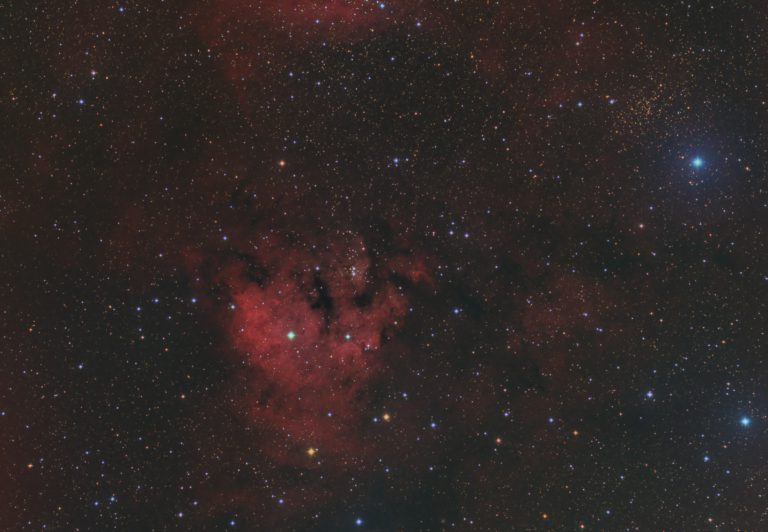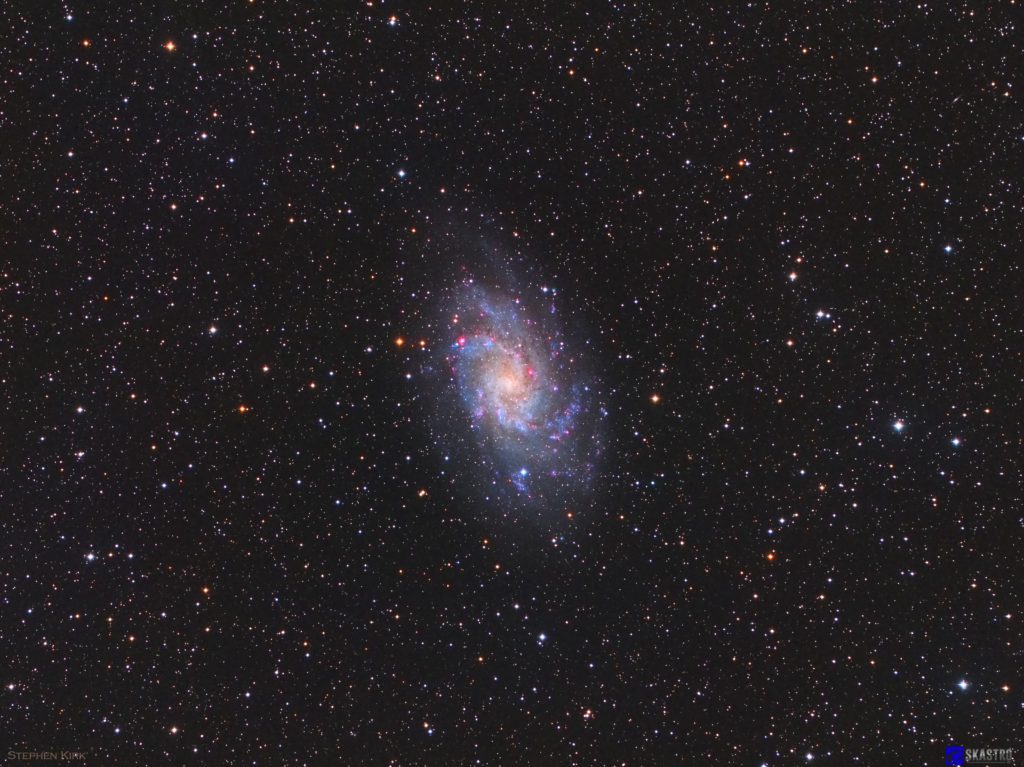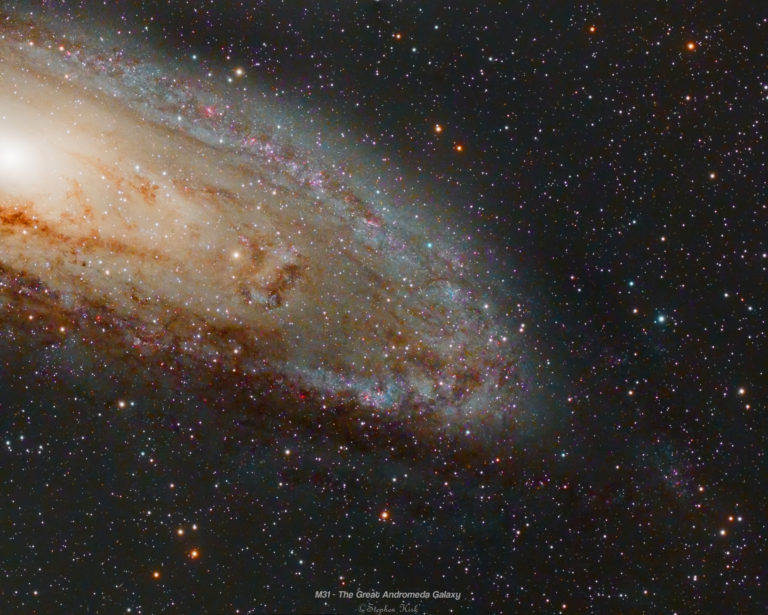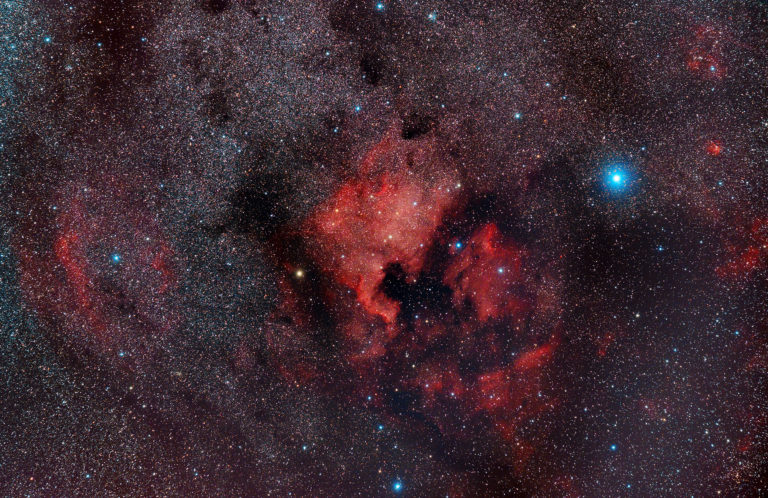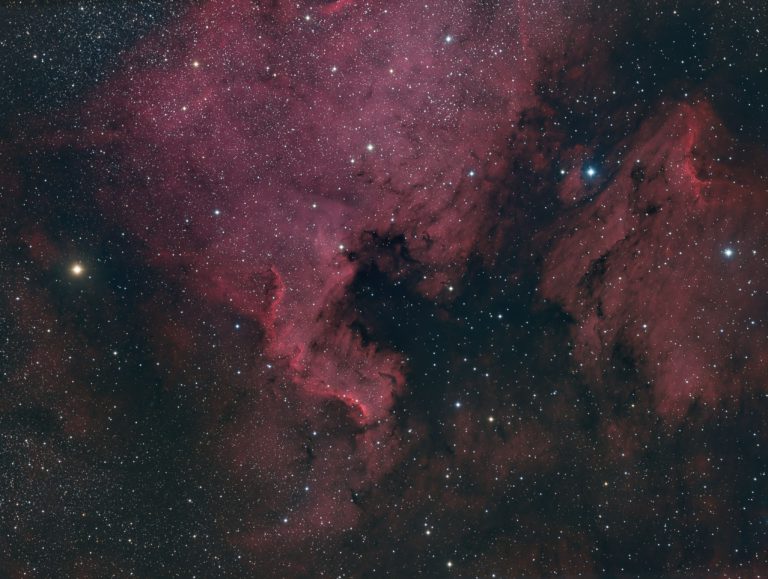Sh2-171 in Cepheus Sh2-171 is a star forming region in the constellation of Cepheus in the far northern hemisphere of the sky. Imaged here with Takahashi FSQ85 and G2-8300 with Astrodon HaRGB filters.
M33 is a galaxy about 2.8 – 3 million light years away in the constellation of Triangulum. Along with M33, it is one of the Local Group of galaxies with which our own Milky Way galaxy shares the local universe. M33 is the most distant object that the human naked eye can see, appearing as a ghostly white smudge on a very dark night from clear skies. It is a magnificent spiral galaxy about half the size of our own galaxy and because of its close proximity to us it appears very large in our skies and is am oft-photographed object by many, myself included. M33 Galaxy in Triangulum I’ve imaged M33 multiple times. For example, with the same FSQ85 telescope here and also at a closer image scale with the TEC140 refractor here. This time I have set the galaxy in a slightly wider field by utilising the FSQ85 0.73…
M31 is one of the most favoured and popular imaging targets in the night sky; it is bright, large and very photogenic. I have imaged this galaxy numerous times, for example, in this LRGB version and in this OSC version. Since the galaxy is so large, each of these images is set in a wide field, one of 3 degrees horizontally and 2 degrees vertically across the field of view which equates to six times the diameter of the full moon. Many newcomers do not appreciate how large these objects are in the sky. Large but VERY dim! M31 in OSC from a QHY268C and Takahashi FSQ85 refractor The above image is at a resolution of 4.16arcsec/pixel. On such a large object as M31 this allows the entire galaxy to be imaged in one field of view on a wide field refractor such as the FSQ85 but does not allow…
North American and Pelican Nebulae with Samyang 135mm lens and QHY268C Camera This is my first ever image capture with the excellent NINA software. I used my wide-field rig which consists of the Samyang 135mm lens and QHY268C OSC camera using an IDAS 2″ LP filter. The wide angle view brings out the North American nebula (NGC 7000) and The Pelican nebula to its right very nicely. There is also a lot of other background luminosity in the image.The image set is a modest 18 x 180s exposures captured in August 2021, all the data being binned 1×1. Pre-processed and processed in PixInsight with a few tweaks in Photoshop.
HaRGB A perennial favourite object to image in the summer and autumn months in the Northern Hemisphere. I’ve imaged this target with multiple equipment combinations over the years. For example, in One Shot Colour (OSC), in widefield and in a very wide field.As part of the image I used my existing Ha dataset from 2018/2019 which consists of 48 x 600 second exposures. I discuss capture of this image here. 48 x 600s Ha Image I then captured the RGB dataset in October 2021. This image is my first image set that I captured using the excellent NINA (Nighttime Imaging “N” Astronomy) imaging software. I captured four hours of RGB data through Astrodon 31mm E series Gen 2 filters binned at 1×1. This consisted of 300 second exposures. Seeing and transparency were not good but clear nights have been very infrequent in the UK in the past six months so I…

